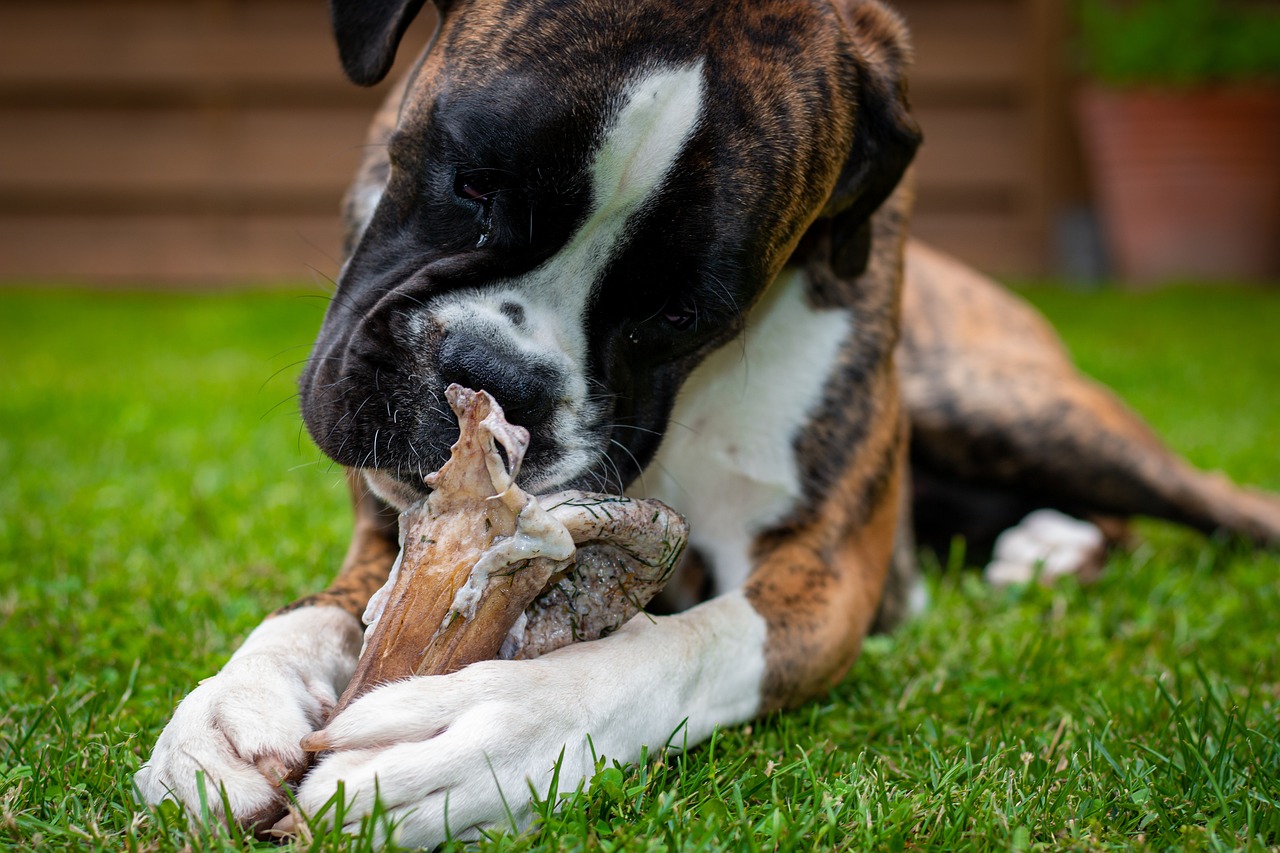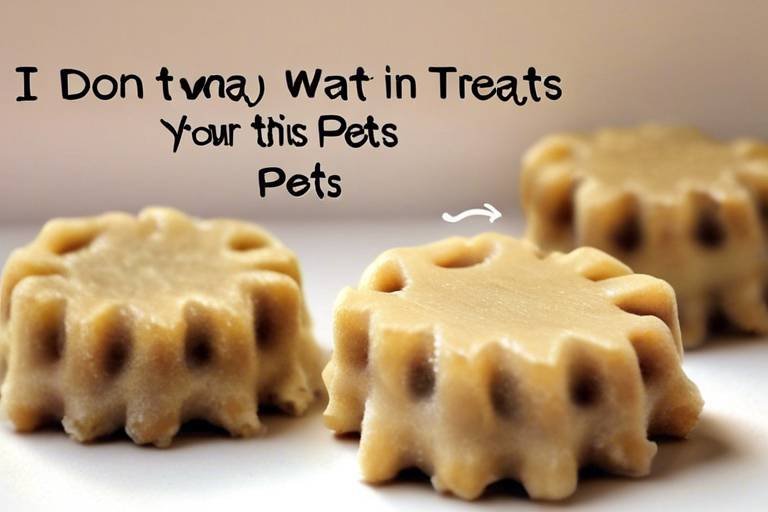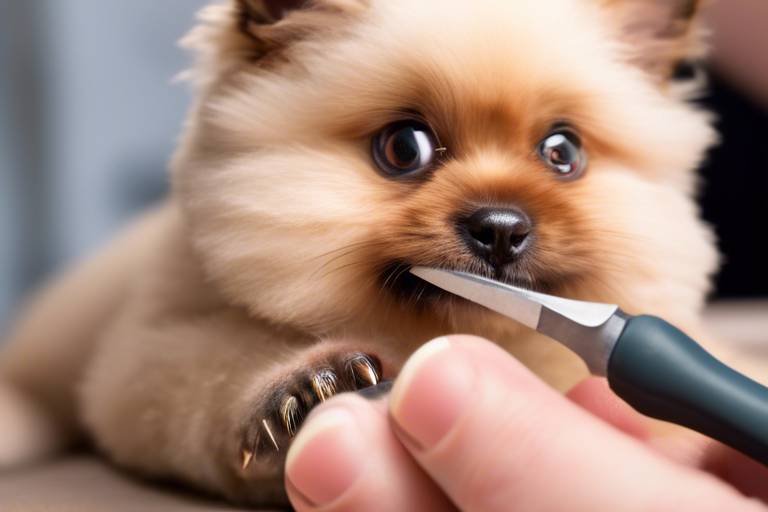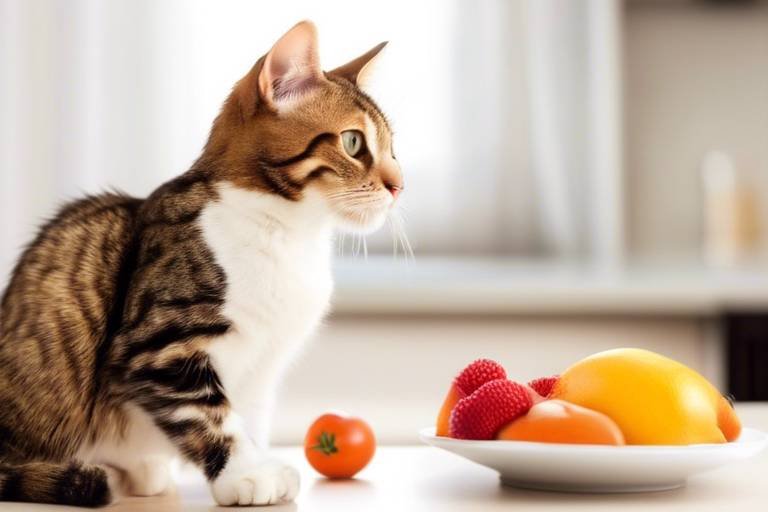How to Make Homemade Treats for Your Pets
Are you tired of scanning the ingredient lists on commercial pet treats, wondering what all those unpronounceable additives are? Well, you're not alone! Making homemade treats for your furry companions is not just a fun activity; it's a way to ensure that your pets are munching on nutritious snacks tailored to their specific dietary needs. Imagine the joy on your pet's face when they taste a treat made with love and care, knowing exactly what's inside. Plus, it's a fantastic bonding experience! In this article, we’ll explore the myriad benefits of homemade pet treats, delve into essential ingredients, and even share some scrumptious recipes that will have your pets begging for more.
Why should you consider whipping up some homemade goodies for your pets? The reasons are as plentiful as the ingredients you can use! First off, you have complete control over what goes into your pet's treats. This means you can select fresh, high-quality ingredients that are free from harmful preservatives and fillers. Furthermore, if your pet has any dietary restrictions—be it allergies, sensitivities, or just picky preferences—you can easily adjust the recipes to fit their needs. Imagine being able to cater to your pet's unique taste buds while also ensuring they're getting the nutrition they deserve! Not to mention, homemade treats often come with the added bonus of being fresher than store-bought options, making them more appealing to your pet.
Understanding the key ingredients used in homemade pet treats is crucial for crafting the perfect snack. When you think about what makes a great treat, consider incorporating a balance of grains, proteins, and natural flavors. Grains like oats and whole wheat flour provide a hearty base, while proteins such as chicken, beef, or fish elevate the flavor and nutritional value. Don't forget about natural flavor enhancers! Ingredients like pumpkin, sweet potatoes, and peanut butter can make your treats irresistible.
While many human foods are safe for pets, it's essential to be cautious. Here’s a quick rundown of safe ingredients you can use to ensure your homemade treats are both delicious and healthy:
- Oats
- Whole wheat flour
- Chicken or beef broth
- Peanut butter (make sure it doesn’t contain xylitol!)
- Pumpkin puree
- Sweet potatoes
On the flip side, there are certain foods that can be harmful to pets. It’s critical to steer clear of these ingredients when making treats:
- Chocolate - A big no-no for dogs!
- Grapes and raisins - Can cause kidney failure in dogs.
- Onions and garlic - These can damage red blood cells.
- Xylitol - A sweetener that is toxic to dogs.
Want to amp up the flavor of your pet's treats? Consider adding these healthy ingredients:
- Pumpkin - Great for digestion!
- Peanut Butter - Most dogs go crazy for it!
- Sweet Potatoes - A nutritious and tasty option.
Creating simple and tasty dog treats at home is easier than you might think! Here’s a basic recipe to get you started:
Peanut Butter Oatmeal Dog Treats Ingredients: - 1 cup peanut butter (no xylitol) - 1 cup oats - 1/2 cup flour (whole wheat or oat flour) - 1/4 cup chicken broth (low sodium) Instructions: 1. Preheat your oven to 350°F (175°C). 2. Mix all ingredients in a bowl until well combined. 3. Roll out the dough and cut into shapes. 4. Bake for 15-20 minutes until golden brown. 5. Let cool before serving!
Let’s not forget our feline friends! Cats also deserve delicious treats. Here’s a simple recipe to keep your kitty purring with delight:
Tuna Cat Treats Ingredients: - 1 can tuna in water, drained - 1 egg - 1 cup oat flour Instructions: 1. Preheat your oven to 350°F (175°C). 2. Blend the tuna, egg, and oat flour until you have a dough. 3. Roll into small balls and place on a baking sheet. 4. Bake for 10-12 minutes. 5. Allow to cool before serving!
Proper storage is essential for maintaining the freshness of your homemade pet treats. Keep them in an airtight container in a cool, dry place. If you’ve made a large batch, consider freezing some for later use. Just remember to thaw them before serving!
Every pet is unique, and customizing their treats can enhance their experience. Feel free to modify recipes by incorporating your pet’s favorite flavors or adjusting the texture to suit their chewing preferences. For instance, if your dog loves carrots, try adding some finely grated carrots to the mix. The possibilities are endless!
Q: How long do homemade pet treats last?
A: Typically, homemade treats can last about a week when stored in an airtight container. If frozen, they can last for several months!
Q: Can I use human food leftovers for pet treats?
A: Yes, but make sure they are safe for pets and don’t contain any harmful ingredients. Always check for toxic foods before sharing!
Q: Are homemade treats healthier than store-bought?
A: Generally, yes! Homemade treats allow you to control the ingredients and avoid preservatives, making them a healthier option.

Benefits of Homemade Pet Treats
This article explores the benefits and steps involved in creating delicious and healthy homemade treats for your pets, ensuring they enjoy nutritious snacks that cater to their dietary needs.
When it comes to treating our beloved pets, nothing beats the joy of crafting homemade treats tailored just for them. One of the biggest advantages of making treats at home is the control over ingredients. You can choose exactly what goes into each snack, ensuring it’s packed with nutrients and free from harmful additives. This means no more worrying about mysterious ingredients or preservatives that you can't pronounce!
Another significant benefit is freshness. Store-bought treats often sit on shelves for weeks, if not months, losing their flavor and nutritional value. In contrast, homemade treats are made fresh, allowing you to serve your pets snacks that are bursting with flavor. Imagine the delight on your furry friend's face when they munch on a treat that’s just come out of the oven!
Additionally, homemade treats allow you to cater to your pet's specific dietary needs. Whether your dog has allergies or your cat prefers a particular flavor, you can customize recipes to suit their preferences. This personalization not only enhances their eating experience but also promotes better health. For instance, if your pet is grain-sensitive, you can opt for grain-free ingredients without compromising on taste.
Moreover, making treats at home can be a fun and rewarding activity. It’s an opportunity to bond with your pet while whipping up something special. You can even involve your kids in the process, teaching them about nutrition and the importance of caring for our furry friends. It’s like a little culinary adventure right in your kitchen!
To sum it up, here are some key benefits of homemade pet treats:
- Ingredient Control: You know exactly what your pet is eating.
- Freshness: Treats are made fresh, enhancing flavor and nutrition.
- Customization: Tailor recipes to meet specific dietary needs.
- Bonding Experience: Fun activity to share with your family and pets.
With all these perks, it’s no wonder that more pet owners are opting to make homemade treats. Not only do they ensure that their pets are getting the best, but they also enjoy the peace of mind that comes with knowing exactly what goes into their beloved snacks. So, why not roll up your sleeves and start baking some delightful treats for your furry companions?
Understanding the key ingredients used in homemade pet treats is crucial. This section discusses safe and nutritious options, including grains, proteins, and natural flavors that can enhance your pet's diet and taste experience.
Not all human foods are safe for pets. This subsection provides a list of safe ingredients to use, ensuring your homemade treats are both delicious and healthy for your furry friends.
Certain foods can be harmful to pets. Here, we outline common toxic ingredients, such as chocolate and grapes, that should never be included in your homemade pet treats.
Enhancing the flavor of pet treats can be done with healthy additions. This part discusses natural flavor enhancers like pumpkin, peanut butter, and sweet potatoes that your pets will love.
Creating simple and tasty dog treats at home is easy. This subsection provides a couple of basic recipes that will keep your canine companions happy and healthy.
Cats also deserve delicious treats! This section shares easy-to-follow recipes specifically designed for feline friends, ensuring they enjoy the same benefits of homemade snacks.
Proper storage is essential for maintaining the freshness of homemade pet treats. This subsection covers tips on how to store treats to keep them safe and tasty for your pets.
Every pet is unique, and customization can enhance their treat experience. This section offers suggestions on how to modify recipes to suit your pet's preferences and dietary needs.
Have questions about homemade pet treats? Here are some common inquiries:
- Can I use regular flour for pet treats? It's best to use whole grain or alternative flours like oat or coconut flour for better nutrition.
- How should I store homemade treats? Keep them in an airtight container in a cool, dry place. You can also refrigerate or freeze them for longer shelf life.
- How long do homemade treats last? Typically, they can last up to two weeks at room temperature, longer if refrigerated or frozen.

Essential Ingredients for Pet Treats
When it comes to making homemade treats for your beloved pets, understanding the essential ingredients is key to ensuring their health and happiness. Just like us, pets need a balanced diet that includes various nutrients to thrive. By choosing the right ingredients, you can create snacks that not only satisfy their taste buds but also align with their dietary needs. For instance, incorporating whole grains like oats or brown rice can provide essential fiber, while proteins such as chicken or fish can help build and repair tissues. It's like crafting a gourmet meal, but in treat form!
Moreover, the beauty of homemade pet treats lies in the ability to tailor them to your pet's specific preferences and dietary restrictions. If your furry friend is allergic to certain ingredients, you can easily swap them out for alternatives that are safe and nutritious. For example, if your dog loves peanut butter but has a sensitivity to wheat, you can use oat flour instead to create a grain-free version. This flexibility not only makes treat-making enjoyable but also ensures that your pets are getting the best possible nutrition.
Here are some key ingredients to consider when whipping up your pet's tasty snacks:
- Grains: Oats, brown rice, and barley are excellent sources of fiber and carbohydrates.
- Proteins: Chicken, turkey, fish, and eggs provide essential amino acids.
- Fruits and Vegetables: Carrots, sweet potatoes, and apples offer vitamins and minerals.
- Healthy Fats: Coconut oil and fish oil can promote a shiny coat and healthy skin.
It's important to note that while many ingredients are safe for pets, some can pose risks. Always opt for natural and unprocessed ingredients when possible, as these are free from artificial additives and preservatives. Think of it as choosing fresh ingredients from a farmer's market versus pre-packaged items filled with mysterious chemicals. Your pets deserve the same quality of food that you would want for yourself!
In conclusion, creating homemade pet treats allows you to take control of what your furry friends consume. By focusing on essential ingredients and prioritizing their health, you can make delicious snacks that not only taste great but also contribute to their overall well-being. So, roll up your sleeves and get ready to whip up some tail-wagging goodness!
Choosing Safe Ingredients
When it comes to crafting tasty homemade treats for your furry companions, is paramount. Just like how we pay attention to what we eat, our pets deserve the same level of care. It's essential to understand that not all human foods are safe for our beloved pets. Some ingredients can be downright dangerous, while others can be incredibly nutritious. So, how do you navigate this culinary maze? Let’s break it down!
First and foremost, always opt for whole, natural ingredients. Think of it like cooking for yourself; you wouldn’t want to use processed foods filled with preservatives, right? The same goes for your pets. Fresh fruits, vegetables, and quality proteins should be your go-to options. For example, lean meats like chicken or turkey can provide a great protein source, while veggies such as carrots and peas can add vital nutrients.
When selecting ingredients, consider the dietary needs of your pet. Dogs and cats have different nutritional requirements, so what works for one might not be suitable for the other. For instance, dogs thrive on a mix of grains and proteins, while cats require a higher protein content. Here’s a quick reference table to help you out:
| Ingredient Type | Safe Options for Dogs | Safe Options for Cats |
|---|---|---|
| Proteins | Chicken, Beef, Fish | Chicken, Turkey, Fish |
| Grains | Oats, Brown Rice | None (cats are obligate carnivores) |
| Fruits | Blueberries, Apples (without seeds) | Blueberries, Bananas |
| Vegetables | Carrots, Sweet Potatoes | Carrots, Peas |
Additionally, it's wise to consult with your veterinarian before introducing any new ingredients, especially if your pet has known allergies or health issues. They can provide tailored advice that suits your pet's specific needs, ensuring that your homemade treats are not only delicious but also safe.
In summary, choosing safe ingredients for your homemade pet treats is all about being informed and attentive. By prioritizing whole, natural foods and considering your pet's unique dietary requirements, you can whip up treats that are both nutritious and delicious. After all, a happy pet is a healthy pet!
- What ingredients should I avoid when making pet treats? Always avoid chocolate, grapes, onions, and garlic as they can be toxic to pets.
- Can I use leftover human food for pet treats? Only if the food is safe for pets; always check for harmful ingredients.
- How can I tell if an ingredient is safe for my pet? Research or consult with a veterinarian for guidance on pet-safe foods.
Common Toxic Foods to Avoid
When it comes to treating our furry friends, it’s crucial to remember that not all human foods are safe for pets. In fact, some common foods can be downright dangerous! Imagine giving your beloved dog a chocolate bar, thinking it's a special treat, only to find out later that it could lead to serious health issues. To keep your pets safe, here’s a quick rundown of some of the most toxic foods you should absolutely avoid:
- Chocolate: This sweet delight contains theobromine, which is toxic to dogs and cats. Even small amounts can cause vomiting, diarrhea, and in severe cases, seizures or even death.
- Grapes and Raisins: While they may seem like a healthy snack, these fruits can cause kidney failure in dogs, and the exact reason remains a mystery.
- Onions and Garlic: These common kitchen staples can damage your pet's red blood cells, leading to anemia. Even small amounts can be harmful, so it’s best to keep them out of your pet's diet.
- Avocado: While great for humans, avocados contain persin, which can be toxic to pets, especially birds and dogs.
- Xylitol: This sugar substitute, found in many sugar-free products, can cause a rapid insulin release in dogs, leading to hypoglycemia (low blood sugar), seizures, and liver failure.
It’s essential to stay informed and vigilant about what goes into your pet's treats. Always read labels and double-check if you’re unsure about a particular ingredient. A good rule of thumb is: if it’s not specifically made for pets, it’s best to keep it out of their reach. Remember, a little knowledge goes a long way in ensuring your pet's health and happiness!
Q: Can I use human food in homemade pet treats?
A: Yes, but be cautious! Always ensure that the ingredients are safe for your pet. Avoid toxic foods and stick to pet-friendly options.
Q: How can I tell if a food is safe for my pet?
A: Research is key! Look up lists of safe and toxic foods for pets, and when in doubt, consult your veterinarian.
Q: What should I do if my pet eats something toxic?
A: Contact your veterinarian immediately or call an emergency pet poison hotline. Time is of the essence!
Q: How can I customize treats for my pet?
A: You can modify recipes by adding flavors your pet loves or adjusting ingredients to meet their dietary needs. Just ensure all additions are safe!
Healthy Additions for Flavor
When it comes to making homemade treats for your pets, flavor is key! Just like us, our furry friends enjoy a variety of tastes and textures in their food. By adding healthy ingredients that enhance flavor, you can create treats that not only satisfy their taste buds but also contribute to their overall health. Think of these additions as the secret spices that elevate a good dish into a great one!
One of the most popular and pet-friendly flavor enhancers is pumpkin. This vibrant orange fruit is not only rich in fiber, which aids digestion, but it also has a naturally sweet taste that dogs and cats adore. You can use pure pumpkin puree (not the spiced pie filling) in your recipes to add moisture and flavor.
Another fantastic option is peanut butter. Most dogs go absolutely wild for it! Just make sure to choose a brand that is free from xylitol, a sweetener that is toxic to pets. Peanut butter is packed with protein and healthy fats, making it a nutritious addition to any treat. You can mix it into doughs or even use it as a filling in treats to keep your pets happily licking away.
Sweet potatoes are another excellent addition. They are not only delicious but also loaded with vitamins A, C, and B6, as well as fiber. You can bake or steam sweet potatoes, then mash them up to incorporate into your treat recipes. This not only adds a natural sweetness but also a delightful texture that pets love.
For a little extra kick, consider adding carob powder. This chocolate substitute is safe for pets and has a naturally sweet flavor. It’s perfect for those recipes that require a chocolatey taste without the harmful effects of real chocolate. Carob is rich in antioxidants and can make your treats even more appealing.
Let’s not forget about oats. They are a great source of fiber and can help maintain your pet’s digestive health. Oats can be ground into flour for baking or added whole to give treats a hearty texture. They blend well with other ingredients and can make your treats more filling.
Finally, consider using some herbs like parsley or basil. These not only add flavor but also provide health benefits. Parsley, for instance, can freshen your pet’s breath, while basil has anti-inflammatory properties. Just a sprinkle can make a big difference!
Incorporating these healthy additions into your homemade pet treats can transform them from ordinary to extraordinary. Remember, the goal is to create tasty snacks that your pets will love while ensuring they receive the nutrition they need. So, experiment with these ingredients and watch your pets enjoy every bite!
1. Can I use human food in my pet's treats?
Yes, many human foods are safe for pets, but it's essential to choose wisely. Always check if the food is safe for your specific pet before including it in their treats.
2. How do I know if a food is toxic to my pet?
Research is crucial! There are many resources available online that list toxic foods for pets. Some common ones include chocolate, grapes, and onions. Always err on the side of caution.
3. How should I store homemade pet treats?
Store them in an airtight container in a cool, dry place. For longer shelf life, you can refrigerate or even freeze them, depending on the ingredients used.
4. Can I customize recipes for my pet's dietary needs?
Absolutely! You can modify recipes to accommodate allergies or specific dietary needs by substituting ingredients. Just be sure to maintain a balance of nutrients.
Basic Recipes for Dogs
Creating homemade treats for your furry friend is not only a rewarding experience, but it also allows you to control what goes into their snacks. Let's dive into a couple of simple yet delicious recipes that your dogs will absolutely love! These recipes are easy to follow and require minimal ingredients, making it a breeze for any pet owner to whip up a batch.
First up is the classic Peanut Butter and Pumpkin Dog Treats. This recipe combines two dog favorites: peanut butter and pumpkin. Not only are these ingredients tasty, but they also pack a nutritional punch. Pumpkin is great for your dog’s digestion, while peanut butter provides healthy fats and protein. Here’s how to make them:
Ingredients: - 1 cup of pumpkin puree (not the spiced pie filling) - 1/2 cup of peanut butter (make sure it's xylitol-free) - 2 cups of whole wheat flour (or oat flour for gluten-free) - 1 egg - A pinch of cinnamon (optional)
To prepare these treats, simply mix all the ingredients in a bowl until you have a dough. Roll it out to about 1/4 inch thick and cut it into fun shapes using cookie cutters. Place the treats on a baking sheet lined with parchment paper and bake at 350°F (175°C) for about 20-25 minutes, or until they are golden brown. Let them cool completely before serving them to your pup!
Another fantastic recipe is Sweet Potato Chews. These chews are not only chewy and satisfying but are also packed with vitamins. Sweet potatoes are rich in fiber, vitamins A and C, and are a great alternative to traditional treats. Here’s how to make them:
Ingredients: - 1 large sweet potato
To make sweet potato chews, simply preheat your oven to 250°F (120°C). Slice the sweet potato into 1/4 inch thick strips. Place them on a baking sheet lined with parchment paper and bake for about 3 hours, turning them halfway through. The longer you bake them, the chewier they will become. Once they’re done, let them cool and watch your dog enjoy a healthy, chewy snack!
These recipes are not only straightforward but also allow for customization. If your dog has specific dietary needs or preferences, feel free to experiment with different ingredients. For example, you can substitute pumpkin with mashed bananas or add in some shredded carrots for an extra crunch. The possibilities are endless, and your dog will appreciate the variety!
Remember, while homemade treats are a great addition to your dog's diet, they should be given in moderation. Treats should only make up about 10% of your dog's daily caloric intake. Always monitor your dog's reaction to new foods and consult your veterinarian if you have any concerns about their diet.
In conclusion, making homemade dog treats is a fun and fulfilling way to show your love for your furry friend. With just a few ingredients and a little bit of time, you can create delicious snacks that are both healthy and enjoyable for your pet. So, roll up your sleeves and start baking—your dog will thank you for it!

Basic Recipes for Cats
When it comes to treating our feline friends, nothing beats the joy of seeing them enjoy a homemade snack. Cats are notoriously finicky eaters, but with the right recipes, you can create treats that are not only delicious but also nutritious. Let’s dive into a couple of simple yet satisfying recipes that will have your cat purring with delight!
First on the menu is a classic Tuna Treat. Cats are typically crazy about fish, and tuna is a fantastic source of protein. To make this treat, you’ll need:
- 1 can of tuna in water (drained)
- 1 egg
- 1 tablespoon of whole wheat flour
- 1 tablespoon of catnip (optional)
Simply preheat your oven to 350°F (175°C). In a mixing bowl, combine the drained tuna, egg, and flour. If your cat enjoys catnip, sprinkle some in for an extra flavor boost. Mix until you have a dough-like consistency. Roll the mixture into small balls or flatten it into shapes on a baking sheet lined with parchment paper. Bake for about 10-12 minutes until they’re firm. Allow them to cool before serving!
Another delightful option is the Chicken and Pumpkin Bites. Not only does chicken provide a great source of protein, but pumpkin is also excellent for digestion. Here’s what you’ll need:
- 1 cup of cooked chicken (shredded)
- 1/2 cup of canned pumpkin (pure, not pie filling)
- 1/4 cup of oat flour
- 1 egg
Start by preheating your oven to 350°F (175°C). In a bowl, mix the shredded chicken, pumpkin, oat flour, and egg until well combined. You can adjust the consistency with more oat flour if too wet. Form small bite-sized pieces and place them on a baking sheet. Bake for 15-20 minutes until golden brown. Let them cool down before treating your kitty!
These recipes are not only easy to make but also allow you to control the ingredients, ensuring your cat gets the best without any harmful additives. Remember, moderation is key! Treats should complement your cat's regular diet, not replace it. And always consult your vet if you’re unsure about introducing new foods into your pet’s diet.
In addition to these recipes, feel free to experiment with different flavors and textures. For instance, adding a bit of shredded cheese or using different types of fish can keep things exciting for your furry friend. Just be sure to always use safe ingredients and keep an eye on your cat’s reactions to new treats.
1. How often can I give my cat homemade treats?
It's best to give homemade treats in moderation, perhaps a few times a week, depending on your cat's overall diet and health.
2. Can I use other types of meat in the recipes?
Absolutely! Feel free to substitute chicken with turkey or even lean beef, as long as it's cooked and shredded properly.
3. What if my cat is allergic to certain ingredients?
If your cat has known allergies, always consult your veterinarian before introducing new ingredients. You can also modify recipes to suit your cat's dietary restrictions.
4. How should I store the homemade treats?
Store the treats in an airtight container in the fridge for up to a week, or you can freeze them for longer storage.
Making homemade treats for your cat is a rewarding experience that strengthens your bond while ensuring they enjoy healthy snacks. So, roll up your sleeves and get cooking, because your furry friend deserves the best!
Storing Your Homemade Treats
Once you've whipped up those delightful homemade treats for your furry companions, the next step is ensuring they stay fresh and tasty. Proper storage is crucial, not just for maintaining flavor, but also for keeping your pets safe from spoilage. Imagine biting into a stale treat; it’s not a pleasant experience, right? Well, your pets feel the same way! So, let’s dive into some practical tips for storing those delicious snacks.
First off, the type of treat you’ve made will influence how you store it. For instance, treats that are moist or contain ingredients like peanut butter or pumpkin may require different storage methods compared to crunchy biscuits. Always allow your treats to cool completely before storing them; this prevents condensation, which can lead to mold. Think of it like letting a cake cool before frosting it; it just makes sense!
Here are some effective storage options for your homemade pet treats:
- Air-tight containers: These are your best friends! Store your treats in air-tight containers to keep them fresh for longer. Glass jars or plastic containers work well. Just make sure they’re clean and dry before use.
- Refrigeration: If you’ve made treats that are more perishable, such as those with yogurt or fruit, consider keeping them in the fridge. This can extend their shelf life significantly.
- Freezing: For long-term storage, freezing is a fantastic option. You can freeze treats in small batches, making it easy to thaw just what you need. Use freezer-safe bags or containers and label them with the date to keep track of freshness.
To give you a better idea of how long your homemade treats can last, here’s a simple table:
| Treat Type | Room Temperature | Refrigerated | Frozen |
|---|---|---|---|
| Crunchy Biscuits | Up to 2 weeks | Up to 1 month | Up to 6 months |
| Soft Treats | 3-5 days | Up to 1 week | Up to 3 months |
| Fruity or Yogurt Treats | 1-2 days | Up to 1 week | Not recommended |
Ultimately, the key to storing your homemade pet treats is to keep them in a cool, dry place, away from direct sunlight. Just like you wouldn’t want to store cookies on a hot windowsill, your pet’s treats deserve a comfortable environment too! And remember, always check for any signs of spoilage before giving them to your pets. A little diligence goes a long way in ensuring your furry friends enjoy their snacks safely.
Q: How long can I store homemade pet treats?
A: It depends on the type of treat. Generally, crunchy biscuits can last up to 2 weeks at room temperature, while soft treats are best consumed within 3-5 days.
Q: Can I freeze homemade pet treats?
A: Yes! Freezing is a great way to extend the shelf life of your treats. Just ensure they are stored in freezer-safe containers or bags.
Q: What should I do if my pet refuses to eat the treats?
A: Pets can be picky! Try altering the recipe slightly or adding a flavor they love, such as peanut butter or chicken broth, to entice them.
Q: Are there any ingredients I should avoid when making treats?
A: Absolutely! Avoid toxic ingredients like chocolate, grapes, and onions. Always research any new ingredients to ensure they’re safe for your pet.
Tips for Customizing Treats
Customizing your homemade pet treats is not just a fun experiment; it's a way to ensure that your furry friend gets exactly what they love and need. Just like us, pets have their own unique tastes and dietary requirements. So, why not tailor their treats to make them even more special? Here are some tips to help you get started!
First off, consider your pet's preferences. Does your dog go crazy for peanut butter? Or does your cat have a penchant for fish? By incorporating their favorite flavors, you can create treats that they’ll be excited about. For example, if your pup loves pumpkin, try adding it to your recipes. It’s not only delicious but also packed with vitamins!
Next, think about your pet's dietary needs. If your pet has allergies or sensitivities, you can easily modify recipes to avoid harmful ingredients. For instance, if your dog is allergic to wheat, you can substitute regular flour with oat flour or almond flour. This not only keeps them safe but also allows you to explore new textures and flavors. Remember, the key is to experiment and find the right balance that works for your pet.
Another way to customize treats is by adding healthy extras. Ingredients like carrots, spinach, and even blueberries can enhance the nutritional value of your treats. These ingredients are not only safe but also provide essential vitamins and minerals. A touch of honey can also be a great natural sweetener that pets love, just be sure to use it in moderation!
Finally, presentation can make a difference too. Use cookie cutters to create fun shapes or even layer different flavors for a visually appealing treat. Your pets will appreciate the extra effort, and it can make treat time feel like a special occasion. After all, who wouldn’t want a star-shaped peanut butter cookie?
In conclusion, customizing pet treats is all about knowing your furry friend and having fun in the kitchen. With a little creativity and understanding of their needs, you can whip up delicious snacks that are sure to make tails wag and purrs resonate!
- Can I use human food in pet treats? Yes, but always ensure that the ingredients are safe for pets. Research is key!
- How long do homemade pet treats last? Depending on the ingredients, they can last from a week to a month. Always store them properly!
- Can I freeze homemade pet treats? Absolutely! Freezing can help maintain freshness. Just make sure to thaw them before serving.
- What if my pet has allergies? Always consult your vet and customize recipes to avoid allergens.
Frequently Asked Questions
- What are the benefits of making homemade pet treats?
Making homemade pet treats allows you to have complete control over the ingredients, ensuring they are fresh and healthy. You can cater to your pet's specific dietary needs and avoid harmful additives found in many commercial treats.
- What ingredients should I use for homemade pet treats?
Safe and nutritious ingredients for homemade pet treats include whole grains like oats, proteins such as chicken or fish, and natural flavor enhancers like pumpkin and peanut butter. Always ensure the ingredients are pet-friendly and suitable for your furry friend.
- Are there any foods I should avoid when making treats?
Yes! Certain foods can be toxic to pets. Avoid ingredients like chocolate, grapes, onions, and garlic. Always research or consult your veterinarian about what foods are safe for your specific pet.
- Can I customize the recipes for my pet?
Absolutely! Every pet has unique tastes and dietary needs. You can customize recipes by adding your pet's favorite flavors or adjusting ingredients based on any allergies or sensitivities they may have.
- How should I store homemade pet treats?
To keep your homemade treats fresh, store them in an airtight container in a cool, dry place. For longer storage, consider refrigerating or freezing them, especially if they contain perishable ingredients.
- Are there specific recipes for dogs and cats?
Yes! There are simple and tasty recipes tailored for both dogs and cats. You can find a variety of recipes that cater to the different tastes and nutritional needs of your pets.



















